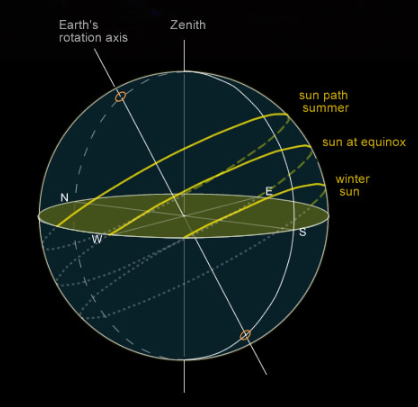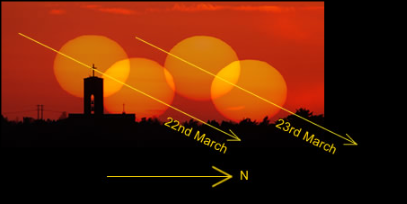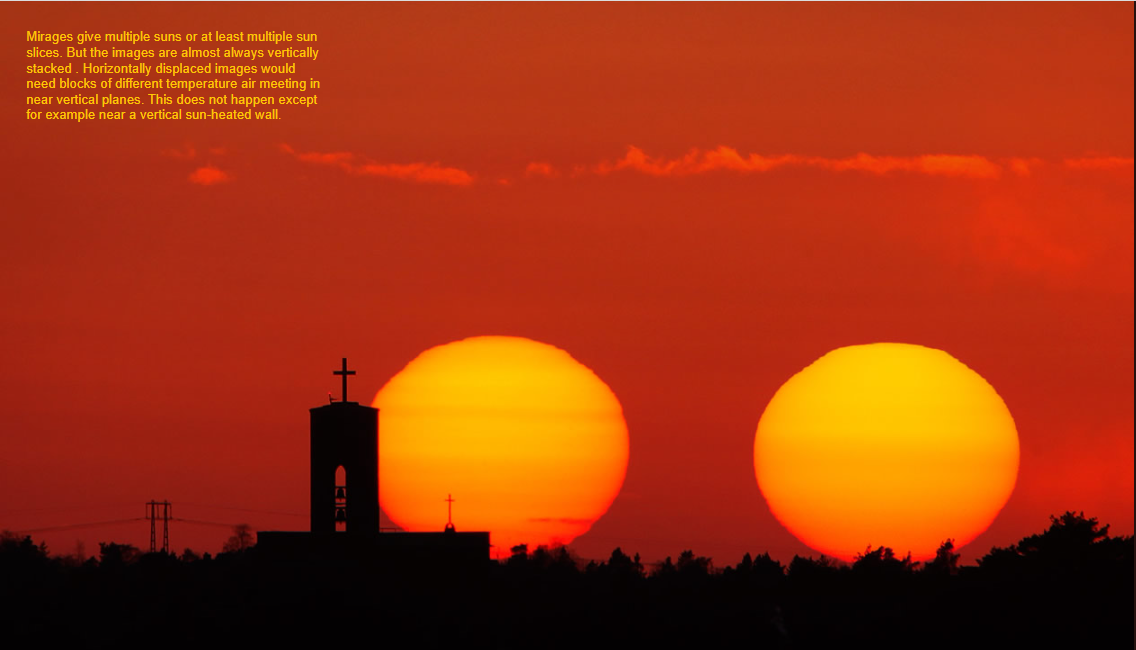OPOD - Two suns, Stockholm Spring
OPOD - Two Suns, Stockholm Spring
Have you ever heard the belief that Scandinavia has two suns, an ordinary one and a midnight sun that only appears in summer? Well, it turns out that this is not true. The idea of two suns is actually a misconception held by some tourists. However, there is an interesting phenomenon that can give the appearance of multiple suns in the sky, and it was captured beautifully in a series of images by photographer Peter Rosen in Stockholm during the spring equinox.
During the spring equinox, which occurs around March 21st, the Earth's axis is tilted about 23.5° to the plane of its path around the sun. This means that at the equinox, the sun rises near exactly in the east and sets in the west. In the northern hemisphere, as spring advances, the sunrise and sunset points gradually creep northwards, making each day slightly longer. The changes are most rapid at the equinox and slow down to zero at the summer solstice.
Peter Rosen captured the sunset on two consecutive clear days closest to the spring equinox, March 22nd and 23rd. He then superimposed these images, with the rightmost sun representing the 23rd. In just one day, the sun had climbed appreciably higher in the sky, causing the sunset point to shift north by more than 0.75°. This shift resulted in an extra 5 minutes and 21 seconds of daylight. After a long, dark, and cold northern winter, these changes are indeed welcome signs of the arrival of spring.
The images captured by Peter Rosen also bring up an interesting point about mirages. Mirages can create the illusion of multiple suns or multiple slices of the sun. However, these images are usually vertically stacked, meaning that they appear one on top of the other. To have horizontally displaced images, blocks of different temperature air would need to meet in near vertical planes. This phenomenon rarely occurs, except for instances near a vertical sun-heated wall.
In conclusion, while Scandinavia does not have two suns, there are fascinating atmospheric optics phenomena that can create the illusion of multiple suns in the sky. The images captured by Peter Rosen in Stockholm during the spring equinox beautifully demonstrate how the sun's position changes as spring progresses. The shift in the sunrise and sunset points brings longer days and marks the end of a long, dark winter. Mirages, on the other hand, can also create multiple sun illusions, although they are typically vertically stacked. These natural phenomena serve as reminders of the awe-inspiring wonders that can occur in our atmosphere.

Stockholm Spring Sunset
Not a mirage. Also, the belief of some tourists that Scandinavia has two suns, an ordinary one and a midnight sun that only appears in summer, is untrue! Peter Rosen imaged the sunset on the two consecutive clear days (22nd and 23rd March) closest to the spring equinox. He then superimposed them, the rightmost sun is the 23rd. In only one day the sun has climbed appreciably in the sky and the sunset point has shifted north by more than 0.75� giving an extra 5m21s of daylight. Welcome signs indeed after a long, dark and cold northern winter. Images ©Peter Rosen, shown with permission

Earth's axis is tilted ~23.5° to the plane of its path around the sun. At the equinox the sun rises near exactly in the east and sets at west. In the northern hemisphere the sunrise and sunset points creep northwards as spring advances making each day slightly longer. The changes are most rapid at the equinox and slow to zero at the summer solstice.


Mirages give multiple suns or at least multiple sun slices. But the images are almost always vertically stacked . Horizontally displaced images would need blocks of different temperature air meeting in near vertical planes. This does not happen except for example near a vertical sun-heated wall.
Note: this article has been automatically converted from the old site and may not appear as intended. You can find the original article here.
Reference Atmospheric Optics
If you use any of the definitions, information, or data presented on Atmospheric Optics, please copy the link or reference below to properly credit us as the reference source. Thank you!
-
<a href="https://atoptics.co.uk/blog/opod-two-suns-stockholm-spring/">OPOD - Two suns, Stockholm Spring</a>
-
"OPOD - Two suns, Stockholm Spring". Atmospheric Optics. Accessed on November 23, 2024. https://atoptics.co.uk/blog/opod-two-suns-stockholm-spring/.
-
"OPOD - Two suns, Stockholm Spring". Atmospheric Optics, https://atoptics.co.uk/blog/opod-two-suns-stockholm-spring/. Accessed 23 November, 2024
-
OPOD - Two suns, Stockholm Spring. Atmospheric Optics. Retrieved from https://atoptics.co.uk/blog/opod-two-suns-stockholm-spring/.